Sizes and shapes
Classic tiles are square or rectangular, porcelain floor tiles are the same, only on a larger scale. Even without paying attention to the selection of shades and patterns, the interior can be made original and bright if you combine segments of different sizes or lay them out in a non-trivial way: diagonally, herringbone, in a given order or randomly. The layout principle chosen for the floor is sometimes partially duplicated on the walls.
It is not difficult to find tiles of original shapes now: in the form of brickwork, honeycombs, elongated hexagons, elegant monograms, pot-bellied barrels, abstract figures. It looks great on its own and doesn’t need any additions, but it can also act as an accent solution if combined with standard-configuration tiles or porcelain tiles.
For those who don’t want to think about a successful selection of shades, we can recommend plain tiles of several sizes with contrasting grout or, as experts call it, fugue – it will emphasize the unusual layout.
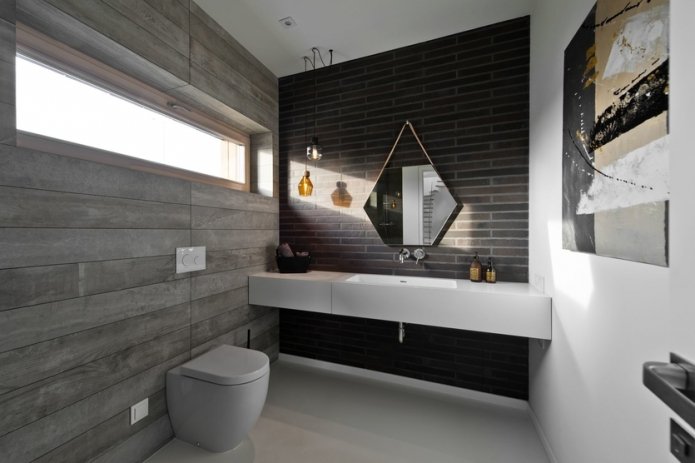
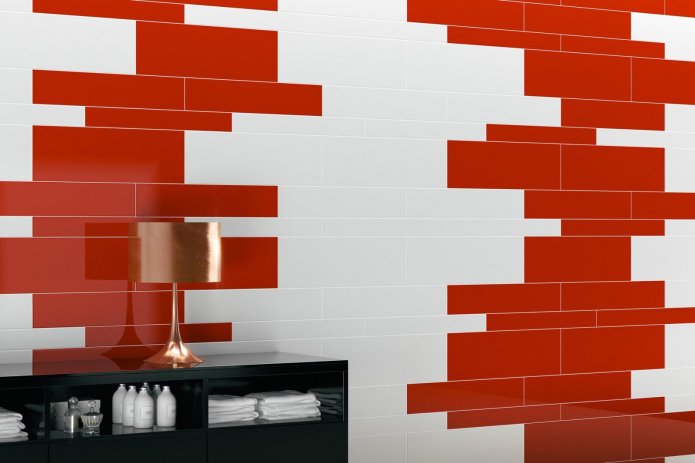
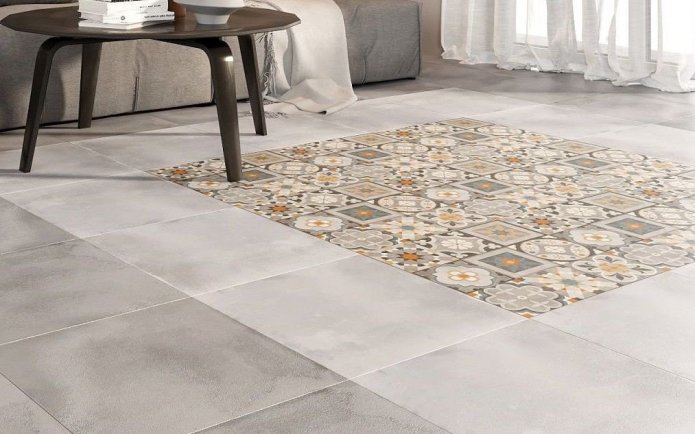
Color combinations
It’s a matter of taste, but many owners want to keep up with fashion when starting a renovation. Natural tones are still in trend, but bold “artificial” shades also find their place in popular styles: high-tech, eclecticism, pop art.
Let’s outline the universal rules for combining tile colors in the interior:
- 1 beautiful tone all alone or on a neutral background (from white through gray to black);
- 2 rich contrasting shades (purple/yellow, wine/ocher);
- 3 colors, one of which is neutral, the remaining two are close in the palette (graphite/electric/turquoise, concrete/pistachio/lemon);
- 4 tones, three of which are neutral, and one is a bright accent, or three shades of the same color of different saturation on a neutral background (black/gray/white/red, white/gradient from cornflower blue to pale blue).
Based on these simple principles, it is difficult to make a mistake, but even if you deviate from them, you can get a harmonious result, as is obvious from the example below.
There is only one immutable rule – a tiny kitchen or bathroom should not be finished with tiles that are too dark, because this will visually reduce the already modest area.
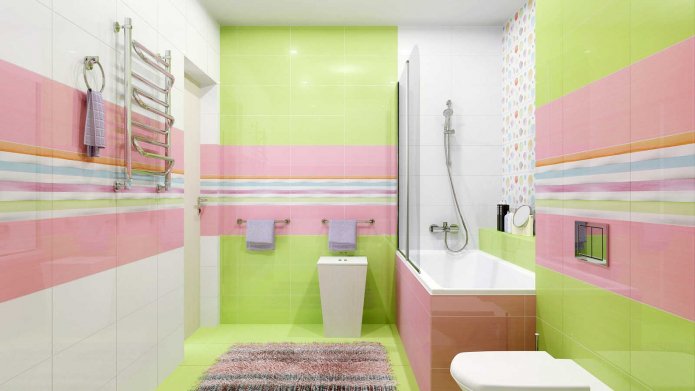

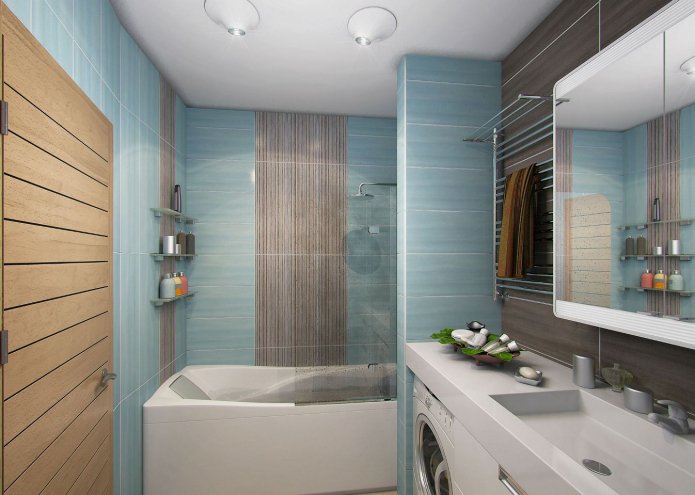
Drawings and ornaments
In addition to shape and color, there is a third effective design tool – a memorable print, which allows you to lead the interior in the direction of a certain style and fix it there or combine the selected shades into a holistic composition. This can be an ethnic motif, a traditional vintage pattern, a colorful patchwork, a picture of flowers and fruits in the kitchen or marine scenes in the bathroom.
A win-win technique is vertical and horizontal stripes, as well as rectangular inserts or separate segments with a thematic pattern.
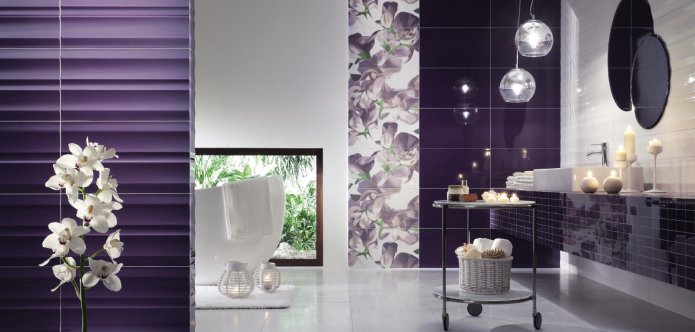
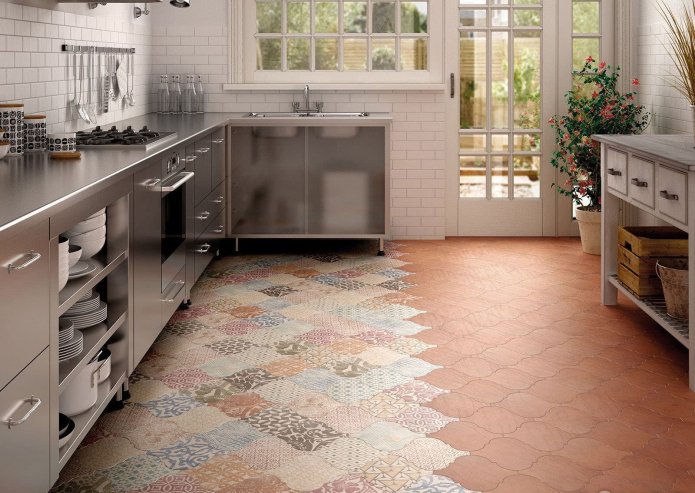
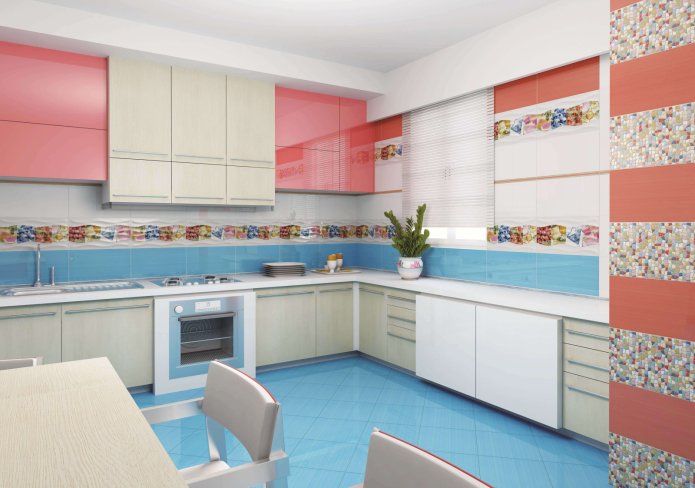
Mosaic
This is not just a small tile, it is a whole art. With the help of quickly installed and affordable mosaic panels, kitchen aprons are decorated, niches and shelves are highlighted, a shower stand is emphasized, a bathtub or sink is decorated, mirrors and cabinets are framed. Against the background of larger tiles or porcelain tiles, such accents work at full strength, especially if they shine or have an unusual texture.
A neatly laid out mosaic art panel always looks more expensive than it costs, and perfectly copes with the role of the “heart” of the interior.
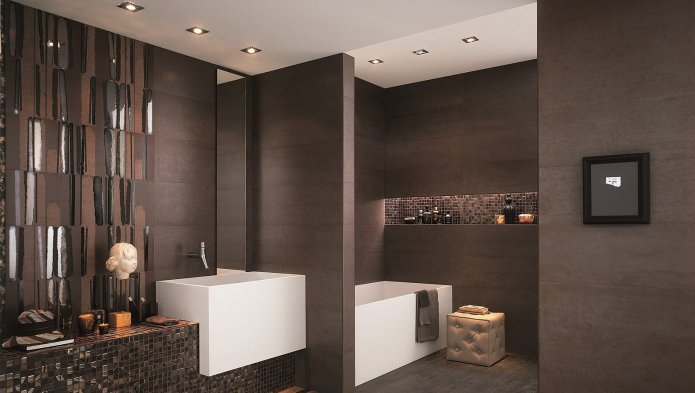
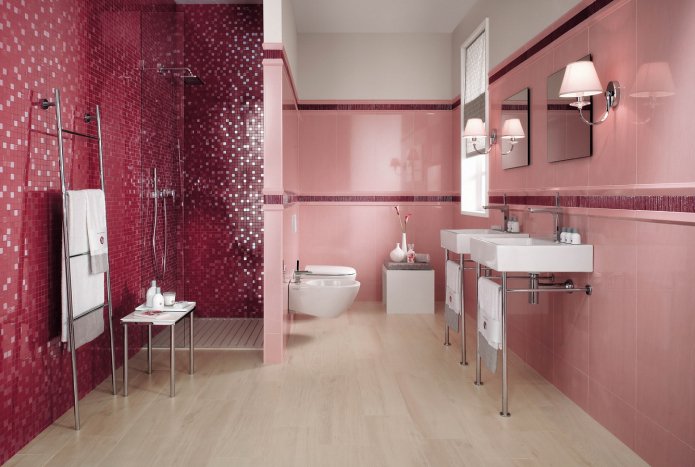
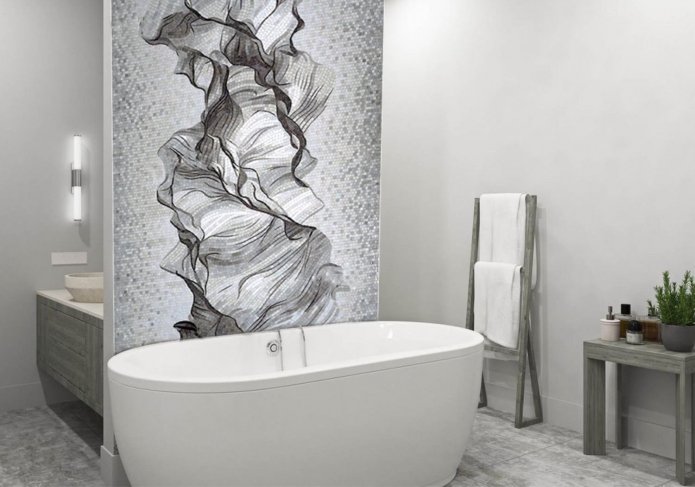
Glass blocks
Single-color or colored glass blocks with or without backlighting are used to build zoning partitions, shelves, and bar counters. This attractive and practical material is easy to fit into any dynamic modern design trend: loft, minimalism, eco-style. Glass block compositions will be appropriate everywhere, including living rooms and living rooms.
Glass blocks go well not only with regular glossy tiles, but also with tiles that have a complex structure or imitation load: brick, wood, cork, fabric, leather.
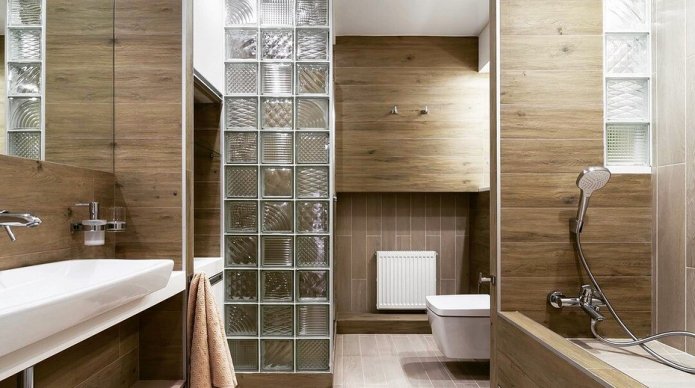
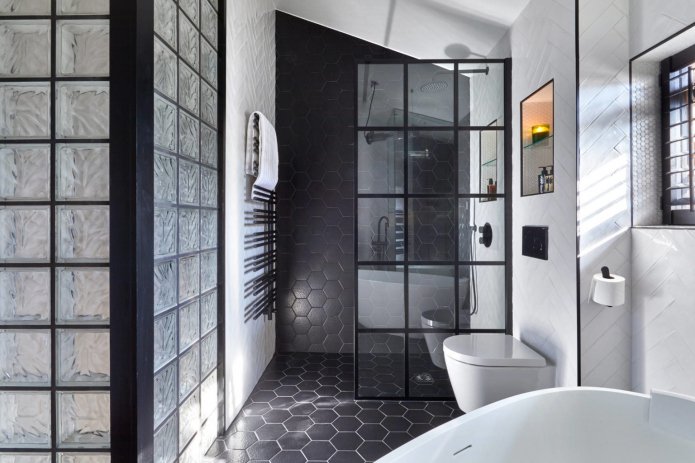
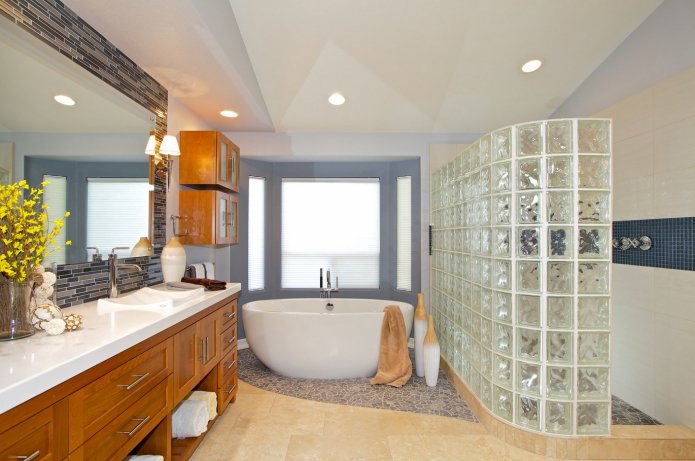
Stone
By successfully combining ceramic tiles with artificial stone or natural rock, you will get a respectable interior with a bright individuality, because the pattern will always be unique. This solution is definitely suitable for those who need to beautifully decorate a small studio apartment, softly beat the transition from the kitchen to the dining room or living room.
It is easy to emphasize the richness and naturalness of the matte, rough structure of the stone with the help of glossy tiles – add them to the adjacent walls or lay them on the floor.
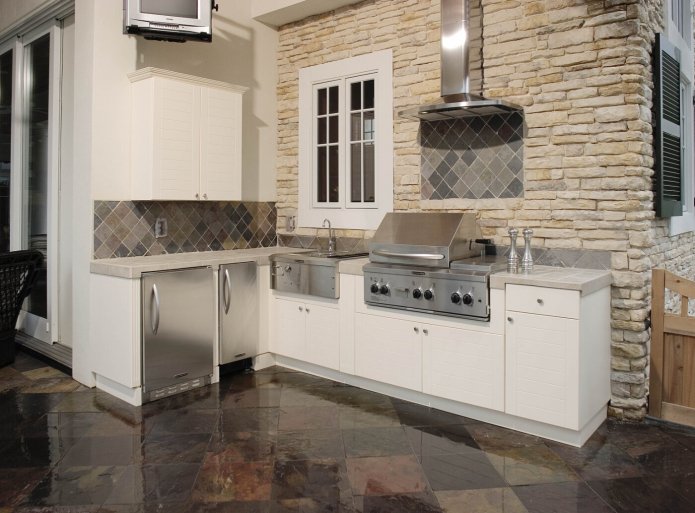

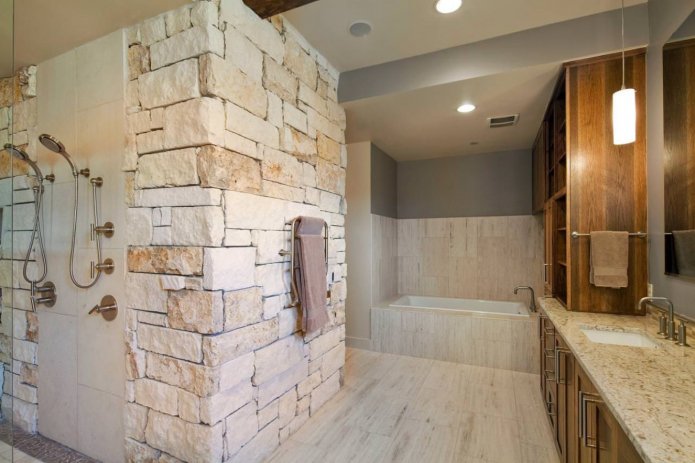
Wood
Unlike tiles, wood cannot boast of moisture resistance and ease of cleaning, but this does not stop nature lovers. There are methods of protective wood treatment that allow this material to be used for finishing bathrooms and kitchens. Although in places most exposed to dampness and high temperatures, it is better to lay porcelain stoneware or tiles, rather than parquet or wooden panels.
It is not necessary to use real wood – decorative floor and wall tiles are available for sale, indistinguishable in appearance from noble oak, walnut, beech or wenge.
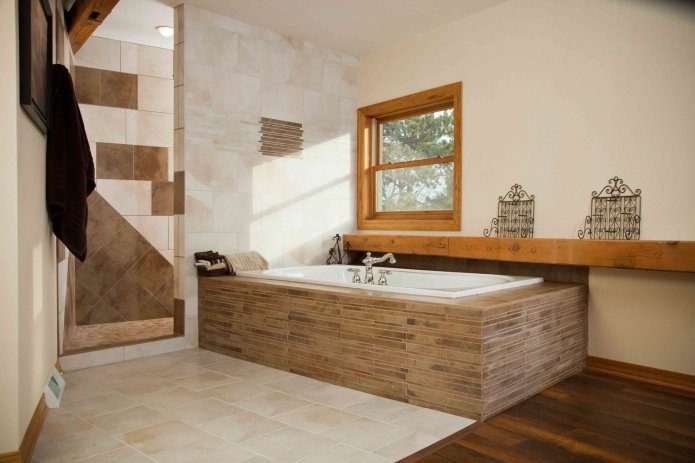
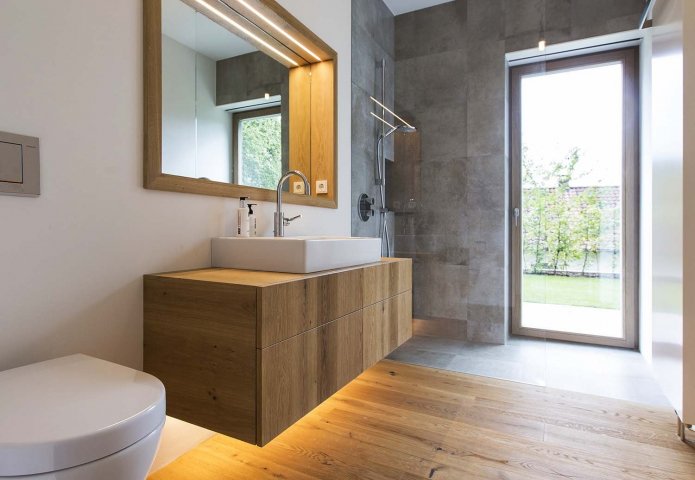
Wallpaper
Even high-quality paper, especially vinyl or non-woven wallpaper, will be suitable for decorating walls in the dining room, kitchen or bathroom, if you combine them with tiles, covering the most “problematic” places: above the stove, sink, toilet, bathtub. This is not to mention washable wallpaper, glass wallpaper and special canvases for painting. With their help, you can create a unique interior design and save a lot on repairs.
In one room, it is acceptable to combine different materials: tiles, mosaics, wallpaper, laminate.
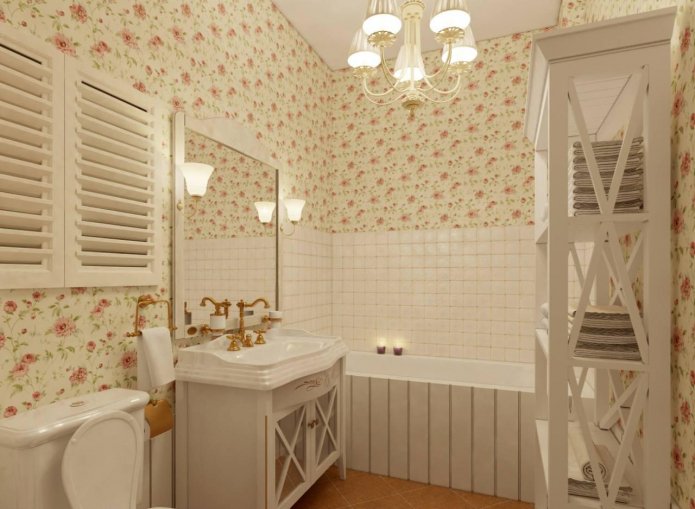
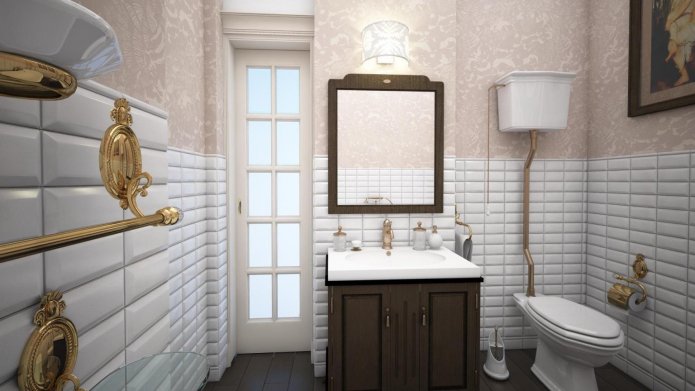
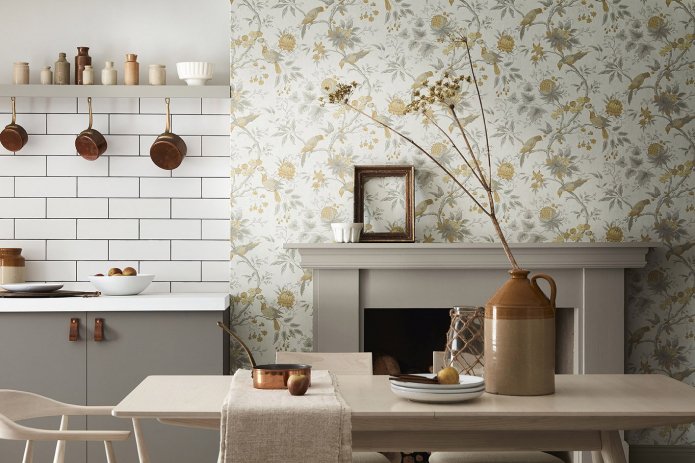
Paint
Waterproof paints are more affordable than good wallpaper, and they open up even more scope for creativity. Owners who love variety and frequent changes usually take up a brush or roller, because if the interior is based on discreet tiles, it will be easy to transform it in a matter of minutes by repainting the walls and ceiling. With white, gray and black tiles everything goes well, as we said at the very beginning, so you can choose a nice combination of 2-3 shades.
In addition to paint, decorative plaster, for example Venetian, which can also have moisture-proof properties, looks great in tandem with tiles.

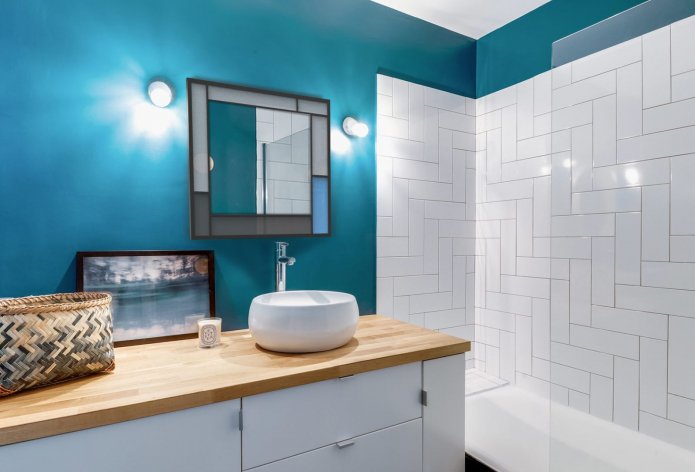

Laminate
In the end, we will separately dwell on an interesting way of decorating the floor where different requirements are imposed on its different parts. We are talking about the transitions from the hallway to the living room, from the kitchen to the dining room, from the bathroom to the bedroom. The area trampled by dirty boots or wet bare feet is better covered with tiles, clinker or porcelain stoneware, and then lay laminate, carpet or linoleum. A flexible threshold is used to separate functional zones, but this is not necessary.
The transition from one material to another can become an elegant design touch if it is smoothly curved, asymmetrical, graphic or torn.
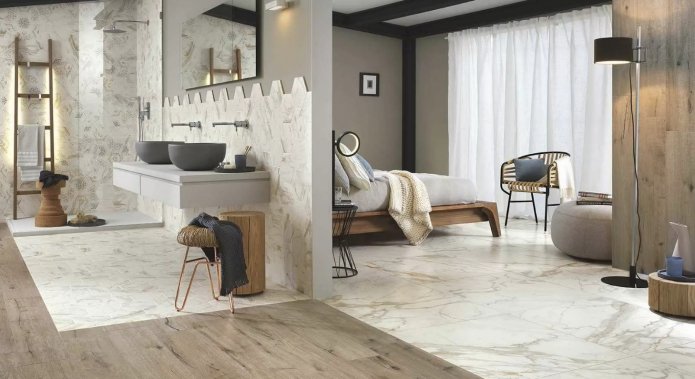
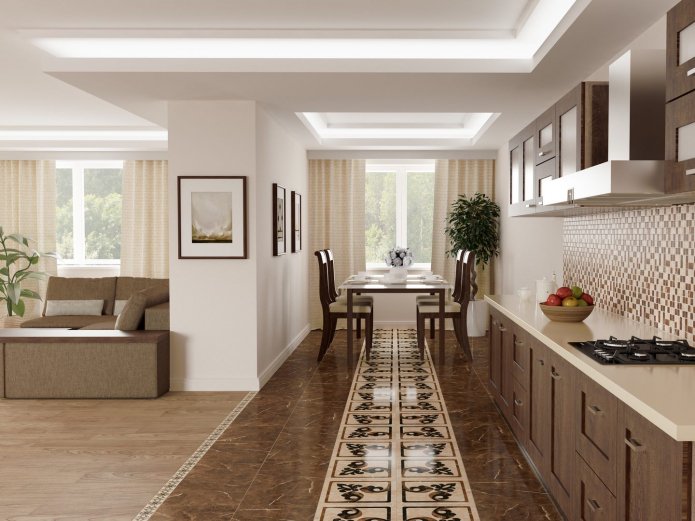
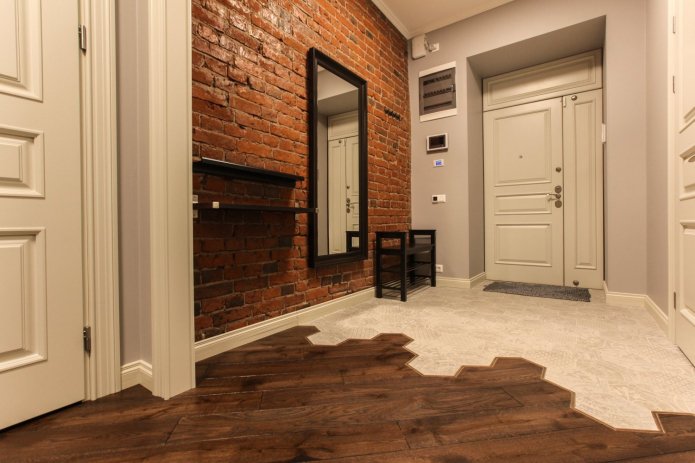
This essay is unlikely to contain anything new, but our goal today is not to surprise with revolutionary ideas, but to collect basic principles and develop a simple system with which even an inexperienced person can navigate when choosing tiles for their home. However, success depends not only on the design, but also on the quality of the material. In order not to redo the interior designed with such labor and love, try to find a balance between price, beauty and reliability.